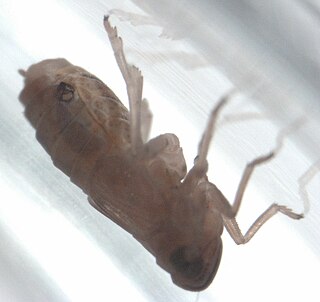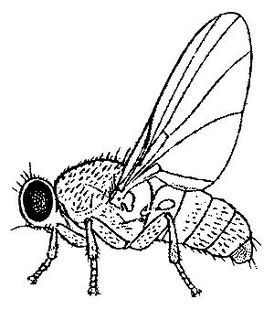 W
WStick insects in New Zealand are found in a range of different environments, from cold high alpine areas to dry coastal bush. There are currently 23 different species described, from 10 genera. The most common species of the stick insect in New Zealand is the smooth stick insect . Following Günther (1953), the New Zealand stick insects are placed into the subfamilies Phasmatinae and Pachymorphinae. Classification and identification is based on Jewell & Brock (2002).
 W
WArchichauliodes diversus is an insect in the subfamily Chauliodinae - the fishflies, though it is often referred to as "The New Zealand Dobsonfly", despite not being a true dobsonfly. In its larval form It is commonly known by the name toe-biter, and its Maori name is puene. The species is native to New Zealand. Although there are many other species of fishfly in other parts of the world, Archichauliodes diversus is the only species of fishfly in New Zealand.
 W
WDrymaplaneta semivitta is a species of cockroach native to Australia and introduced to New Zealand. In New Zealand, it is known as the Gisborne cockroach, after the city of Gisborne where it was first discovered in the country.
 W
WEdpercivalia is a genus of insects known as Caddisflies in the family Hydrobiosidae. This genus is endemic to New Zealand. The genus contains the following species:Edpercivalia banksiensis Edpercivalia borealis Edpercivalia cassicola Edpercivalia dugdalei Edpercivalia flintorum Edpercivalia fusca Edpercivalia harrisoni Edpercivalia maxima Edpercivalia morrisi Edpercivalia oriens Edpercivalia schistaria Edpercivalia shandi Edpercivalia smithi Edpercivalia spaini Edpercivalia tahatika Edpercivalia thomasoni
 W
WElenchus maorianus is a parasitic insect species in the genus Elenchus found in New Zealand.
 W
WFergusonina, the sole genus in the family of Fergusoninidae, are gall-forming flies. There are about 40 species in the genus, all of them producing galls on Eucalyptus, Melaleuca, Corymbia, and Metrosideros species in Australia and New Zealand.
 W
WThe seashore earwig is a species of earwig in the family Anisolabididae. It is native to eastern Australia and New Zealand. Similar both ecologically and taxonomically to the maritime earwig, this species is commonly found on beaches under stones and debris. It is a carnivore, feeding on millipedes, flies, and isopods such as woodlice. Like most other earwigs, the females care for their young during development, and the larva go through five instars before becoming adults. The species also has a negative phototaxis, meaning that it tends to move away from a light source. The species was first described in 1846 by Adam White.
 W
WStenoperla is a genus of insect in the family Eustheniidae containing a number of species of stonefly all endemic to New Zealand.
 W
WWeeleus acutus is an antlion of the Myrmeleontini tribe. It is endemic to New Zealand. This species was first described by Francis Walker in 1853.
 W
WZelandoperla maungatuaensis, commonly known as the Maungatua stonefly, is a species of flightless stonefly so far known only from a single mountainside in Otago, New Zealand.